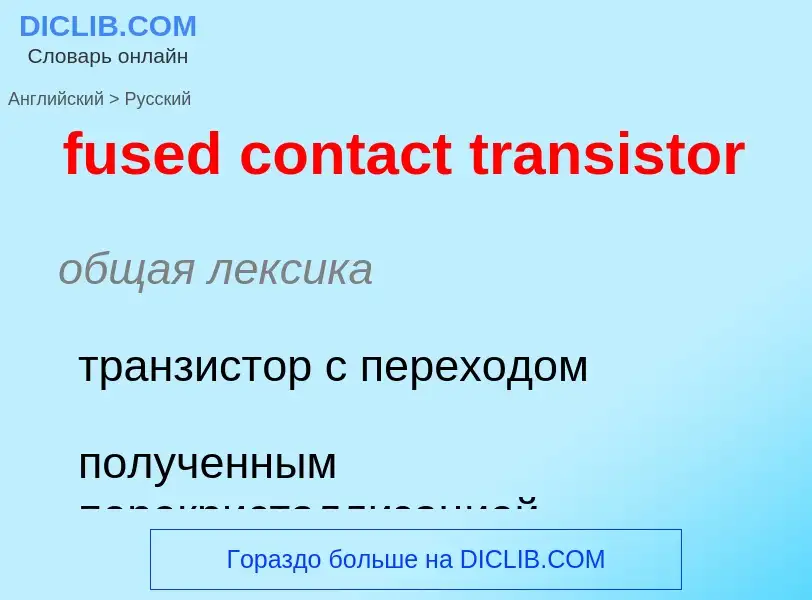Tradução e análise de palavras por inteligência artificial ChatGPT
Nesta página você pode obter uma análise detalhada de uma palavra ou frase, produzida usando a melhor tecnologia de inteligência artificial até o momento:
- como a palavra é usada
- frequência de uso
- é usado com mais frequência na fala oral ou escrita
- opções de tradução de palavras
- exemplos de uso (várias frases com tradução)
- etimologia
fused contact transistor - tradução para russo
общая лексика
транзистор с переходом
полученным перекристаллизацией
общая лексика
ТТЛ
транзисторно-транзисторная логика
вычислительная техника
логика транзистор-транзисторная
общая лексика
точечный транзистор
Definição
Wikipédia

The point-contact transistor was the first type of transistor to be successfully demonstrated. It was developed by research scientists John Bardeen and Walter Brattain at Bell Laboratories in December 1947. They worked in a group led by physicist William Shockley. The group had been working together on experiments and theories of electric field effects in solid state materials, with the aim of replacing vacuum tubes with a smaller device that consumed less power.
The critical experiment, carried out on December 16, 1947, consisted of a block of germanium, a semiconductor, with two very closely spaced gold contacts held against it by a spring. Brattain attached a small strip of gold foil over the point of a plastic triangle — a configuration which is essentially a point-contact diode. He then carefully sliced through the gold at the tip of the triangle. This produced two electrically isolated gold contacts very close to each other.
The piece of germanium used had a surface layer with an excess of electrons. When an electric signal traveled in through the gold foil, it injected holes (points which lack electrons). This created a thin layer which had a scarcity of electrons.
A small positive current applied to one of the two contacts had an influence on the current which flowed between the other contact and the base upon which the block of germanium was mounted. In fact, a small change in the first contact current caused a greater change in the second contact current; thus it was an amplifier. The low-current input terminal into the point-contact transistor is the emitter, while the output high current terminals are the base and collector. This differs from the later type of bipolar junction transistor invented in 1951 that operates as transistors still do, with the low current input terminal as the base and the two high current output terminals as the emitter and collector.
The point-contact transistor was commercialized and sold by Western Electric and others but was eventually superseded by the bipolar junction transistor, which was easier to manufacture and more rugged. The point-contact transistor did still remain in production until circa 1966, by which time the silicon planar transistor was dominating the market.



